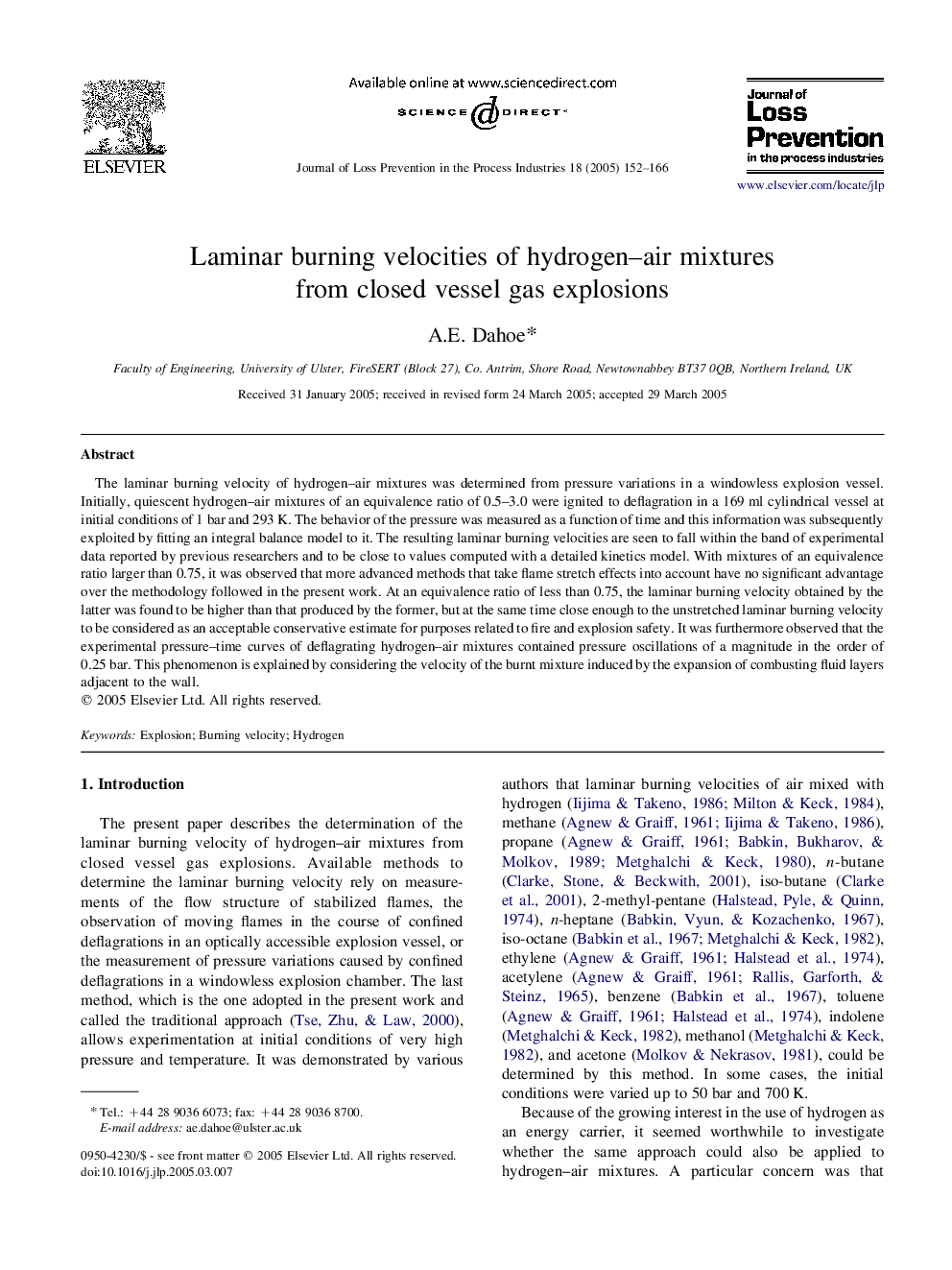| Article ID | Journal | Published Year | Pages | File Type |
|---|---|---|---|---|
| 10373488 | Journal of Loss Prevention in the Process Industries | 2005 | 15 Pages |
Abstract
The laminar burning velocity of hydrogen-air mixtures was determined from pressure variations in a windowless explosion vessel. Initially, quiescent hydrogen-air mixtures of an equivalence ratio of 0.5-3.0 were ignited to deflagration in a 169Â ml cylindrical vessel at initial conditions of 1Â bar and 293Â K. The behavior of the pressure was measured as a function of time and this information was subsequently exploited by fitting an integral balance model to it. The resulting laminar burning velocities are seen to fall within the band of experimental data reported by previous researchers and to be close to values computed with a detailed kinetics model. With mixtures of an equivalence ratio larger than 0.75, it was observed that more advanced methods that take flame stretch effects into account have no significant advantage over the methodology followed in the present work. At an equivalence ratio of less than 0.75, the laminar burning velocity obtained by the latter was found to be higher than that produced by the former, but at the same time close enough to the unstretched laminar burning velocity to be considered as an acceptable conservative estimate for purposes related to fire and explosion safety. It was furthermore observed that the experimental pressure-time curves of deflagrating hydrogen-air mixtures contained pressure oscillations of a magnitude in the order of 0.25Â bar. This phenomenon is explained by considering the velocity of the burnt mixture induced by the expansion of combusting fluid layers adjacent to the wall.
Keywords
Related Topics
Physical Sciences and Engineering
Chemical Engineering
Chemical Health and Safety
Authors
A.E. Dahoe,
